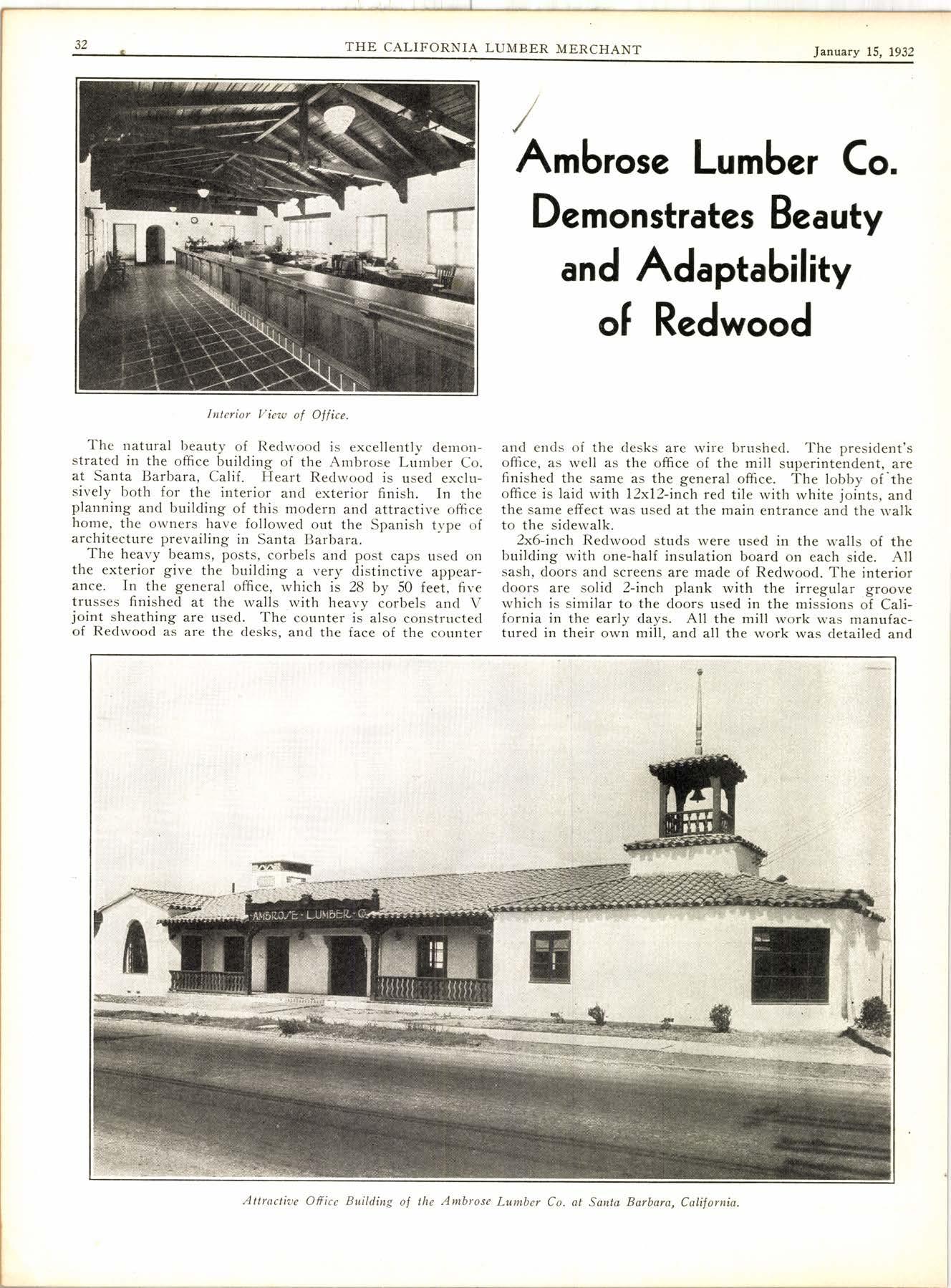
3 minute read
Vagabond Editorials
(Continued from Page 6)
The Northwestern Retail Lumbermen's Association has a slogan for their 1932 convention that is both interesting and euphonious. It is "What to do in thirty-two". And they plan to give their gang something to think of along that line. Mighty good sense.
**r<
Conducting a campaign to reduce accidents in their mill the Alberni-Pacific Lumber Company, at port Alberni, British Columbia, have posted a huge sign at the entrance of their mill that reads: "Our business is to make LUM_ BER, not CRIPPLES; WATCH YOUR STEP,'.
People frequently -rra" ," al orro- how our present forests compare with the original. The original forests of this country were 8ZZ million acres, of which there remain 550 million acres, of which total 47? million acres is com_ mercial timber. Between 85 and 90 per cent of this is softwood timber. But the percentage of remaining timber in terms of FEET is greater than in terms of acres, blcause the remaining greatest stands are in the West where the footage of timber per acre averages very much higher than it ever did in the South, the East, and the North, where the great acreage of former timber lands is found. ***
Speaking of the threat of metal homes, how would you like to try and live in one with a midsummer semi-tropical sun beating down on it? You can air-cool it, sure! But a wooden home, with modest-priced insulation-or none at all-would be much cheaper and easier to keep cool. Somehow or other I can't seem to work myself into much of a scare about this threatened metal home invasion.
Soy beans, from China, rnake the brown sauce that is served with chop suey. We used a certain amount of them
"There are, in my opinion, more constructive sug- gestions expressed in your Vagabond Editorials eiery two rveeks than in all the other lumber trade pa_ pers put together. I am. looking forward with griat interest to every succeeding issue; others here ii the east share that feeling with me. I have occasion to send copies of your admirable journal to friencls of mine, rvho assure me that they are d,eriving a great deal of benefit from the viervs you are holdinig in"connection u'ith the preseltt economic situation,'I
C. D. Mell, Secretary, Philippine N{ahogany Association, Inc., New York Citv.
in that way for years before we discovered that soy beans made wonderful glue. When the plywood business threatened to become one of great importance on the pacific Coast a competitive contest was held to discover what was the best material to paste Douglas Fir plywood together and keep it pasted. They found that soy beans and Fir had a remarkable affinity for one another. This surprised them because soy bean juice does not feel sticky. But it IS, and the Pacific Coast plywood industry is now a huge user of soy beans. * ,r ,*
Harvey Wiley Corbett, famous New york architect, has been conducting experiments with brick to make a brick wall hold water. He has a new method that is said to do the trick. Each brick has a longitudinal groove, top and bottom and continuing around the ends, into which along with the mortar, are htted ell-shaped metal strips that locil the bricks together and prevent seepage through the mortar. , His experirnents show that a brick chimney built in this fashion will hold water for days, while a chimney of the same material without the groove and metal strip lets the water right out. His experiments also show that walls of this style brick will not crumble under pressure like ordinary brick, but simply buckle when the pressure is too great'
* rr *
Very little wood block is used any more for street pav_ ing in the United States. Yet in London, England, DougIas Fir from the United States is still being used in hrte quantities for paving their heavy trafrc thoroughfares.
I lost an old friend an" *n* U"r. His name was Munro. Ffe came from the Delta Country in Mississippi. He was an old colored brother. fn fact, Munro never lived. He was simply the hero of the very best nigger story that ever was told. Dick Putman told me the story of Munro and his visit to Memphis, some twenty years ago, and f,ve been telling it ever since. Always expected to tell it. Then the other day I picked up a Sunday comic supplement, and there I found the story of Munro in an Ella Cinders comic. OnIy they used a cowboy in place of my old friend Munro, which was a crime. But they told the story, in picture and type. That's how I lost Munro. Because a story, once used in that fashion, is never again any good for telling. So, good-bye, Munro ! You were the best nigger story 1 ever told or heard. I'm sure sorry to lose you. Anyway, it took these comic boys over thirty years to discover you. So I had you for a long, long time.










